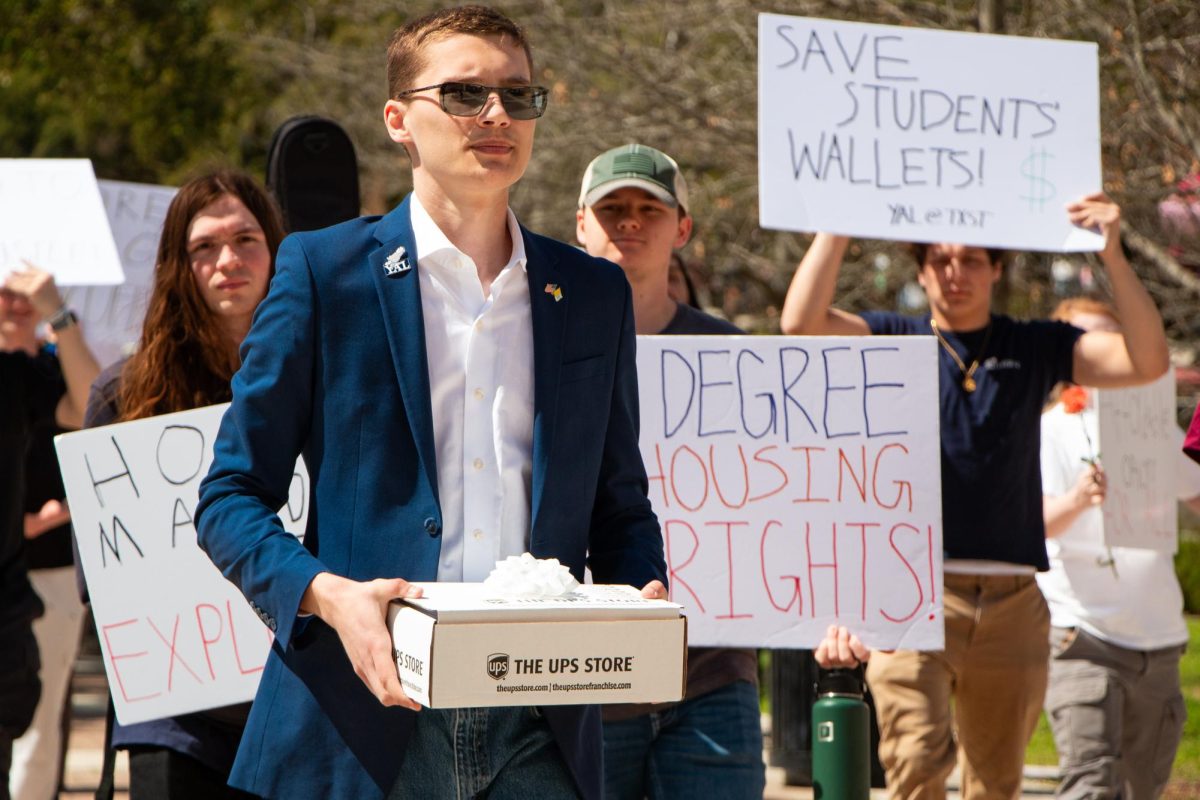On March 20, President Donald Trump signed an executive order to begin dismantling the federal Department of Education.
The executive order calls for the Secretary of Education “to the maximum extent appropriate and permitted by law, take all necessary steps to facilitate the closure of the Department of Education.” It remains unclear how this order will impact Texas State or how soon it will feel the effects.
“The proposed dissolution of the U.S. Department of Education is a continually evolving situation that the Texas State University System and Texas State University are closely monitoring,”Texas State wrote in an email to The Star.
According to the Department of Education’s website, federal student aid, such as loans and grants, accounts for $120 billion in spending every year. According to an email from Texas State, early indications show that student loans and grants will remain in place, however, Trump said they will be moved to the Small Business Administration (SBA) .
“I do want to say that I’ve decided that the SBA… will handle all of the student loan portfolio,” Trump said in a March 21 Oval Office press event . “That is coming out of the Department of Education immediately.”
While grants and loans will remain in place for now, Rolf Straubhaar, associate professor of counseling, leadership, adult education and school psychology at Texas State, said the other funds from the Department of Education, such as research grants, are likely to be cut.
“Of the big possible grant sources out there, the federal research grants, things like those that come from what’s called the Institute of Education Sciences (IES) or NSF, the National Science Foundation,” Straubhaar said. “Even before the Department of Education was dismantled, one of the first steps from DOGE, in addition to dismantling USAID, was to get rid of IES within the Department of Education, that’s a huge source of funding for very large-scale education work.”
While the Trump Administration has not directly confirmed if research grants will be cut, Straubhaar said decreasing the staffing level of the Department of Education means that it will be almost impossible to manage grant applications across the nation.
“They’re saying the money’s still there, but now suddenly, the 4,000 people that were working for the Department of Education who were making sure that that money got out the door and who were taking applications of where it was going, those people are gone,” Straubhaar said.
Straubhaar also said while the administration said loans and grants would be unimpacted, he thinks changes in staffing levels could cause mismanagement for financial aid as well. While loans will be moved to the SBA, the SBA announced that it is reducing its workforce by 43%, meaning financial aid will likely still be handled by fewer individuals than it previously was at the Department of Education.
Another area of concern for Straubhaar is funding for individuals with disability accommodations and in special education programs. Previously, funding for those programs came from the Department of Education, but according to Trump, they will now be managed by the Department of Health and Human Services (HHS).
On March 27, HHS announced they are aiming to reduce their total number of employees from 82,000 at the beginning of the year to 62,000 by the end of the year.
“People love to complain about the amount of money in government, but we don’t complain about the services we get from government,” Straubhaar said. “We expect those, and we depend on those, and more money means fewer services… you can’t make more with less.”
Straubhaar also said he’s concerned the cuts to the Department of Education will decrease the number of people going into academia or becoming teachers.
“I teach in a PhD program, and a lot of our students want to become academics, and we’re having to revisit how we advise those folks,” Straubhaar said.
According to a March 20 White House fact sheet, part of the justification for cutting the Department of Education is that education scores across the country have decreased since the department was created.
Straubhaar said he doesn’t think the department is fully responsible because each state maintains its own curriculum in both K-12 and higher education.
“I think that the trend, to me, is a clear example of correlation not being the same as causation. Just because two things are happening at the same time doesn’t mean that one caused the other,” Straubhaar said. “There are lots of other factors that could have led to those two trends happening at the same time.”
In a March 20 press release , current Secretary of Education Linda McMahon said dismantling the Department of Education will return rights to parents and to the states. According to Straubhaar, who previously taught at elementary schools, schools that are underfunded by state and local tax money and often perform worse than peer schools, called Title I schools, will be heavily impacted. According to the Texas Education Agency, thousands of Texas schools, including most San Marcos Consolidated Independent School District schools, qualify for Title I funding.
“You know kids who are coming to school a bit behind in their reading growth because their parents weren’t in a position to read them a bedtime story every night, or where they didn’t have books around the house,” Straubhaar said. “And those money sources, those pots of money, are there specifically to address those inequities.”
In an email, Texas State said the university would continue monitoring the situation and provide updates as they become available.
“As additional information becomes available, we will continue to assess the potential impact on our institution and communicate updates as appropriate. Our commitment to student success, access, and opportunity remains unwavering,” Texas State wrote in the email.





















